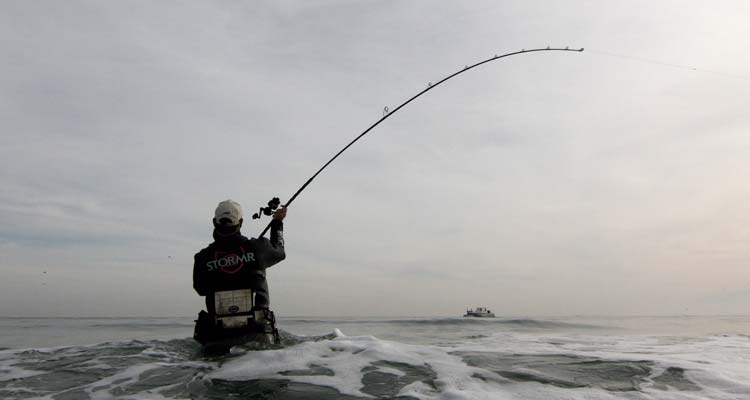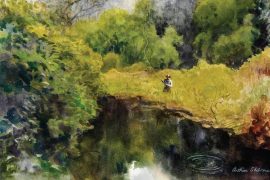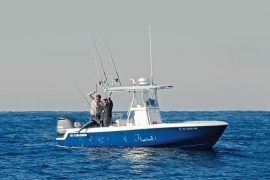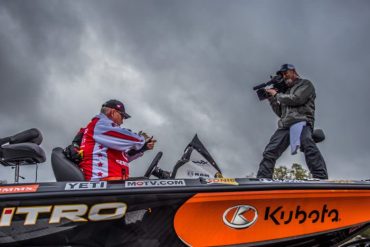
A couple of days before writing this, I found out that I might have to give a software talk in Japan in the fall for my day job. The first thing I did was consult a tide calendar. The next thing I did was contact a coworker to see if he’d like to give the talk instead.
Assuming there’s no unusual weather, I’ll be catching 15- to 25-pound bass on pencil poppers on the dates in question. There’s no “maybe” about it. There’s no concern about the presence of mullet, snappers, or bunker. I’ll be on fish that settle into a particular area at a particular time, and when I have the correct tide at sunrise and sunset, I’ll catch every time and without fail. I won’t catch many but I will catch some, and I’ll have a chance at a big one.

If I go to a particular jetty and fish bucktails on a certain tide between mid-May and mid-June, I’ll be completely dumbfounded if I don’t catch at least a couple of bass. I’ll be equally surprised if I’m the only one there because there are probably dozens of anglers who know exactly what I’m writing about.
In most seasons, at least half of my fishing is done without any concern for baitfish whatsoever, and nearly all of my big-fish targeting is done this way.
In the pencil popping and bucktail fishing plans mentioned above, bait movements are the furthest thing from my mind. I’m interested only in the intersection of a series of conditions or windows –a given place at a time of year at a time of day on a certain tide with typical water conditions. With that, I’ll give the fish a bucktail, pencil popper or eel—whatever it is that they’ve hit over and over again when everything is lined up.
If you have your mind set on catching quality stripers, the first thing to come to grips with is that larger stripers have very different behavior than the smaller ones. If you think you’ll catch big stripers just by catching a lot of small ones and that some big ones will mix in, you’ll never achieve trophy catches with any consistency. The best you can hope for is a rare lucky big fish.

Big and small fish are different creatures. They feed differently. The smaller ones are frequently chasing down a variety of small baits—sand eels, spearing, anchovies, etc. When not migrating, I think the bigger stripers spend the vast majority of their time staging, not feeding. They suck down a large bait and then they’re done for a while. Gut a big bass and what do you find? Porgies, fluke, crabs, blackfish, bergalls … and the list goes on and on. What these baits all have in common is that they’re readily available in many environments. Poke your head beneath the water in a rocky environment or along the base of an inlet jetty and you might see all of these species in a single breath. The big bass are being satisfied by a small quantity of large baits that they don’t have to work too hard to find. Get the picture? They don’t need to go chasing down your piece of plastic, and the odds are good that you’re dragging it by them at a time when they’re not even interested in feeding.
Here’s how I think about it: The big bass that aren’t actively migrating are feeding perhaps an hour a day. What are they doing the other 23 hours? Are they going to random places? No, they’re settling in and staging in areas they find comfortable, and those areas are probably related to the stage of the tide and to some extent, wind strength and direction. That “comfort” may come from things like water temperature, current profile, easy access to deeper water, or readily available food. The nice thing about staging fish is that they’re predictable. If you can figure out where some bass will be located given a certain set of conditions, you’ll have a pattern that will consistently produce.
All of this plays into how I target big stripers. I’m not preoccupied with bait. I’m preoccupied with good water and conditions. Sure, if a school of adult bunker shows up in an ocean jetty pocket, that’s a pretty good place to fish, and I’m there. The problem, at least for me, is that the baitfish movements can be so unpredictable. The big bunker are there one night and gone the next. I have a much easier time predicting where at least a few quality stripers are likely to be holding.

But, there’s a problem with staging stripers—they’re not actively feeding. If they don’t hit, we can’t catch them and can’t even find those special places where they hold. I solve this problem with eels. Whether fished live or rigged dead, eels produce big bass at times when the fish will completely ignore other offerings. I could relate story after story where a few minutes with an eel produced what hours with plugs and bucktails couldn’t. From my observations, eels have the ability to catch bass that aren’t actively feeding.
There are certainly other baits that are also hard for stripers to resist. Live bunker and spot croakers come to mind, but these and most other live baits are a problem for surfcasters, for practical reasons. It’s…





